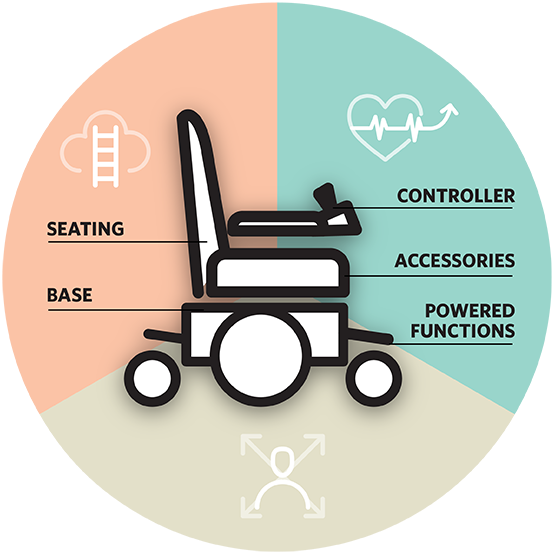A powered wheelchair should ideally reflect its user's lifestyle choices and social circumstances, maximising their capacity for everyday independence, participation and meaningful occupation.
To achieve this, each prescription requires assessment of what components of powerchair technology are required to enable reasonable functional capacity and environmental access, support the user's wellbeing by minimising health and safety risks, and avoid the need for costly personal support.

functional independence
capacity building
social participation
psychological wellbeing

environmental access
everyday living tasks
comfort & safety
ease of transfer
transportability

postural support
pressure care
health and injury risk mitigation
pain minimisation
avoid need for personal support
Magic Mobility powerchairs are constructed from modular components selected to ideally meet user's specific needs.
By viewing each component from all angles, therapists can build a technical specification and clinical rationale that clearly relates the value of superior technology to life-enhancing user outcomes.



